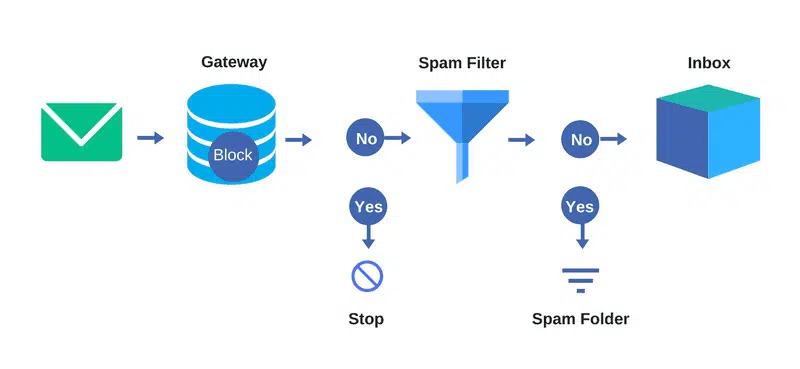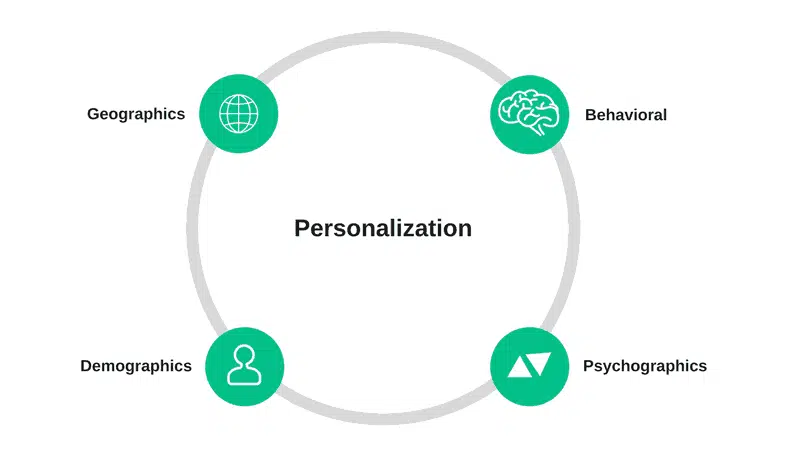Email Mila Kya? A line that is often heard on the office floors and local Xerox centres. Email continues to be our preferred means of communication in India, and we are not alone, approximately half of the world’s population (3.7 billion) used email in 2017. Unfortunately, India also sealed its dubious distinction of being the world’s top destination for spam in 2017. Nearly 85% of emails received in India are spam as per recent studies conducted by Cisco. So what is the Email Marketing India Story and is there a silver lining beyond the gloomy surface?
Email Marketing India Story
The number of worldwide email users will be over 4.1 billion, by the end of 2021 as per estimates by Radicati Group. The number of email accounts will continue to grow as consumers tend to create multiple email accounts for different purposes (i.e. shopping vs friends and family etc.). Over the next four years, average accounts per user will grow from 1.70 to 1.86. The number of consumer and business e-mails sent/received per day have increased to 269.
In 2016, the worldwide software market for email marketing stood at US$ 4.51 bn. The market is expected to grow at 22.80% between 2017 to 2025 in Asia Pacific Region as per reports by Transparency Market Research.
Email Marketing India – Challenges
Anti-Spam & Data Protection Laws
Information Technology Act of 2003 has certain provisions with regards to emails and spams. However, it is subjected to an independent interpretation. Section 79 of the act provides a small window in the name of the regulation. The section states that internet intermediaries must take care and diligence with regards to services they provide, which read together with section 43A of the IT Act (compensation for failure to protect personal data from theft), can “indirectly bring into play a data privacy law”.
For instance, the Cleartrip story brought out an interesting anomaly in the law a few years back when it fired its PR agency for sending spam messages to recipients whose information was shared with the agency by Cleartrip. One may call this a case of ethical policing by the brand, and the company in its own words in the official blog has mentioned that it doesn’t send unsolicited emails. In the absence of a clearly defined law, the only way to protect yourself from the menace is unsubscribing from the list. However, a lot of companies don’t simplify the unsubscription adding to the user learning curve.
Opt-in vs Opt-Out
When you ‘opt-in’ to a program, you are expressly giving your consent to the service provider to receive marketing communication. Sign-up forms on most websites place opt-in boxes or boxes where a tick indicates that person agrees to receive promotional/marketing content.
Opt-out marketing subscribes you to a program unless you explicitly mention that you don’t want to be part of the program. Opt-out marketing assumes that you will be willing to be part of the program. For instance, HDFC Bank launched its virtual relationship manager programme for customers a few years back. The initiative auto-subscribed customers to the program unless a customer explicitly mentions that they don’t want to be part of it.
Most opt-out marketing programs don’t make the unsubscription process easy. Like in the case of HDFC bank’s virtual relationship manager programme required the customer to take six steps before they unsubscribe from the program. State Bank of India also recently used the same opt-out technique for its new digital offering Yono. The launch mailer for the programme requires the user to send an email to an email address with instructions to unsubscribe with account details.
Sender Reputation
20 percent of your legitimate, non-spam emails never reach the user’s inbox as per ReturnPath’s Deliverability Benchmark Report. Reaching the inbox has always been a challenge. For marketers, this means one in five messages never reaches the user’s inbox.
Mailbox providers have to deliver the best possible inbox experience to users, so they have to place strong restrictions on both what is expected and whether it is placed in the inbox or the spam folder.

Every message that makes it past the gateway, spam folders look at the reputation of the sender, subscriber engagement, and content to decide if they should be placed in the inbox or the spam folder for each subscriber. For an email to reach the user’s inbox, it has to make it past both the gateway and the spam filter. To make sure your email is placed in the inbox, marketers have to meet authentication and reputation criteria. Email authentication requirements validate the sender and source/origin of the email.
To meet the requirement marketers have to meet industry standards including SPF, DKIM and DMARC.org. For meeting reputation requirements, marketers have to track their IP reputation, domain reputation, check whether the IP/domain is not listed in other blacklists, and FBM/Spam reports.
“Think of how you can make your user love your mails rather than how to land in the inbox!” – Sri Somanchi, Product Manager, Gmail Anti-Spam
Gmail maintains sender reputation separately. In India, Gmail continues to be the market leader with 62% market share. So for any B2C business in India reaching users inbox would effectively mean maintaining a good sender reputation on Gmail. Gmail provides the Postmaster tool which provides insights on your reputation, spam, feedback loop and more. However, the service is meant for high-volume senders only. Sender reputation is a critical piece of the email marketing India story. Marketers have to keep a close tab on their reputation to make sure they reach users inboxes more often.
Segmentation
Most companies in India have a complete disregard for segmentation. From leading banks to hair care clinics, most brands don’t really have any intelligence when it comes to their own data. By engaging in high volume non-segmented campaigns brands reduce their odds of winning new customers.

Segmenting your email marketing list helps you get better open and click rates. Segmented campaigns received 14.31% opens and 100.95% clicks higher than non-segmented campaigns as per a recent MailChimp Study. Marketers can segment their emailing list using merge fields in the recipient database, sign-up date, interest group, or subscriber activity.
Personalization
It’s 2018, and it’s unlikely that you haven’t heard the word personalization tossed around in a marketing discussion.
Personalization starts with your sign-up form. The additional details that you ask for when someone signs up for your service should capture elements that enable you to develop your personalization efforts. This information gathered will also enable you to segment your list and create dynamic content for different audiences. For more complex personalization you can leverage the email service provider’s API or integrate with your CRM or e-commerce platforms.
Yet marketers in India are clearly struggling to integrate personalization into their campaigns. Personalization in India is not a tool problem but more of a data problem. Email marketing India Story would only evolve to its next logical step when marketers learn to harness the power of data.
Email Marketing India – Way Ahead
In the absence of any regulation, email marketing in India requires self-regulation to prevent spamming. As marketers, the onus is on us to transform the way we look at data and email marketing.
“An email without clarity is like an annoying mime: Just say what you want or get out the way!” – Jordie Van Rijn
In the end, it is about sending emails that users would love to see in their inboxes.

